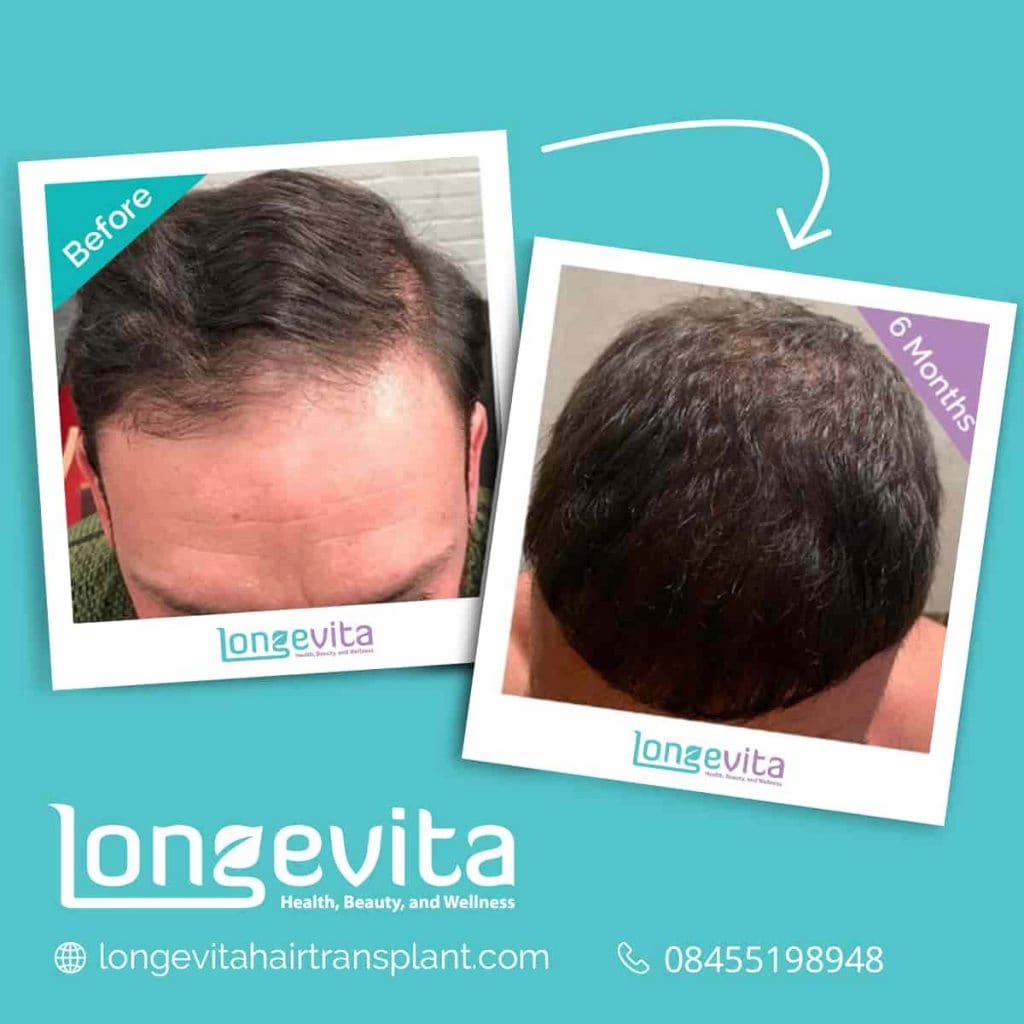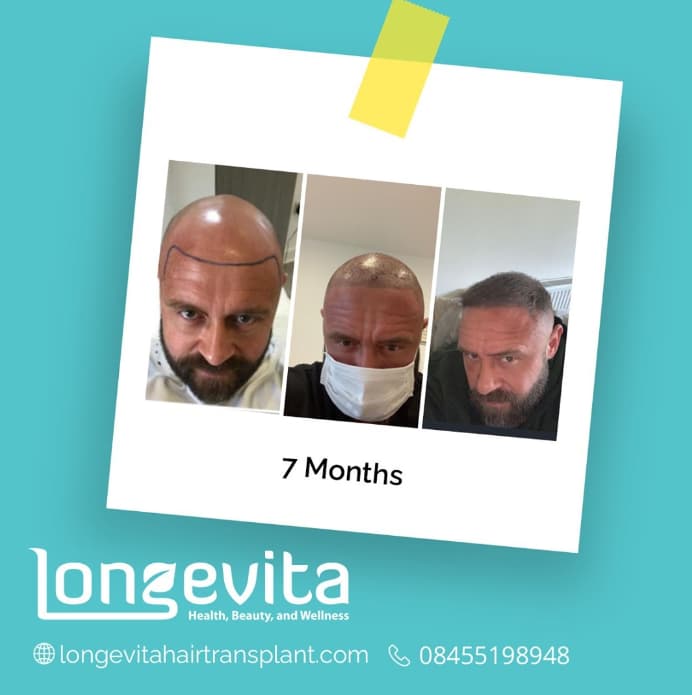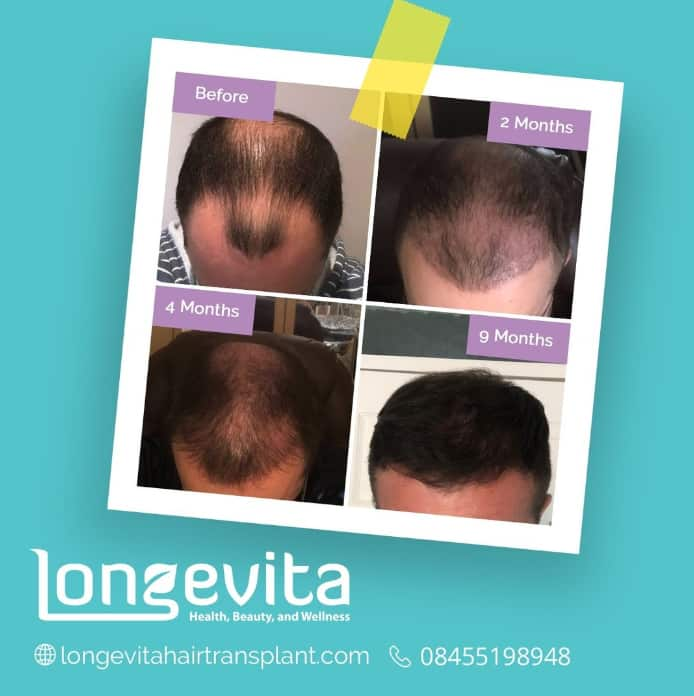After a hair transplant, you need to wait for 12 to 18 months before seeing the final results. While the recovery process can be slow, this surgery is the only way to permanently restore, natural-looking hair growth. No wonder, it has a high patient satisfaction rate. However, soon after the surgery, almost everyone is anxious to see the results as quickly as possible. So, there’s a keen interest in the hair transplant growth chart.
While growing their hair back, many people notice changes in the thickness of their hair. The texture of some people’s hair may also change, which can be quite stressful. But by knowing what’s to come, you can be better prepared for the time after your transplant surgery.
What Is The Hair Transplant Growth Chart?
A hair transplant growth chart will provide you with an average timeline of when your hair will start to grow after a hair transplant. Keep in mind that everyone’s hair grows at a different rate. Your health, age, sex, genetics, and hair type can influence the growth rate. As a result, it is impossible to predict exactly when your hair will start growing; it will vary from person to person.
You should also know that normally, the hair grows anywhere between 0.8-1.2 centimetres per month. So, you can grow ~14 centimetres of hair per year. Soon after a hair transplant, you cannot expect your growth cycle to continue normally. There will be some temporary changes in it, which is why you won’t grow as much as 14 cm of hair in the 12 months following the surgery. There are different reasons for that, so let’s get into them.
Week 1 to 2
You cannot expect your hair to start growing immediately after the surgery. You will be experiencing some side effects while your hair grafts are still taking root. The main reason why your hair won’t start growing for at least 2 weeks after surgery is that you’ll have scabs for that duration.
For inserting the hair grafts in the bald regions, your surgeon will make incisions into the scalp. So, those wounds will take a couple of weeks to heal. You will only see short hair bristles at that point, but they won’t be growing.
Week 2 to 3
During this stage, you can experience what’s known as shock loss. Your hair will start shedding prematurely, and this can go on for 3 months. Again, you won’t grow any hair during this entire time. Your hair growth cycle has been altered. The hair in the growing (anagen) phase has prematurely entered the shedding (exogen) phase. You may have noticed stubble-like bristles of hair on your scalp before, but now it will be bare.
It may seem like you’ve even lost the transplanted grafts, but that’s not the case. The roots of the follicles are intact; only the hair strands have fallen. Many patients are anxious about the results of their surgery, believing it has failed. It’s normal that your hair isn’t growing now, it will begin to grow after a few months.
Months 1 to 3
You will continue to notice patchy areas on your scalp. Some of them will have hair, while others will seem without it. Keep in mind that, at this point, you’re still in the shock loss stage. The recovery process can be slow, but you need to be patient.
Months 3 to 6
For most people, hair growth starts to take place after 3 months. There can, of course, be variations. It is possible for you to start growing your hair a little earlier or later than this time. But, on average, after 3 months, hair growth starts to take place. However, you’ll notice that the new hair is soft, fine and wispy. It also won’t grow evenly.

You won’t notice a homogeneous growth all across the scalp. It will seem like you have inadequate hair density. Here, you should know that this, too, is a part of the process. Your hair density will gradually increase, and so will its thickness. Your hair strand may be fine now, but it will start getting thicker with time.
Months 6 to 8
Many people achieve good hair density just halfway through the recovery process. Any changes that they noticed in the texture and thickness of their hair will start becoming less and less noticeable. Almost 70-80% of hair growth has taken place around this time.

It’s believed that after the 8th month, the hair follicles enter what’s known as the “maturation period.” It’s during this that their thickness increases as they mature to take their natural form.
Months 8 to 12
90-100% of your hair should have grown by this time (if your hair is curly, it can take longer to grow). You should expect your hair growth process to go undeterred if everything’s normal, but it can get delayed if you start losing hair due to an illness, hormonal or seasonal changes. Your hair transplant recovery process can coincide with these events. If this happens, you should make sure to get in touch with your doctor.

Months 12 to 18
Those who have a crown hair transplant usually need more than 12 months to see their final results. That’s because the skin in the crown region is thicker. The blood circulates more slowly in that area. Therefore, the transplanted hair grafts will get oxygen and nutrients more slowly. This, in turn, will delay the hair growth process. It can take as many as 18 months for your hair to achieve full thickness and density in the crown area of the scalp.

Hair Transplant Growth Chart Summary
Following is a summary of the hair growth process after a hair transplant:
| Time After Surgery | Hair Growth |
| 1-2 Weeks | No hair growth |
| 2-3 Weeks | No hair growth Shedding of hair in donor and recipient sites due to shock loss. |
| Months 1-3 | No hair growth Patchy areas of growth may exist on the scalp. |
| Months 3-6 | Growth of a few centimetres (0.8-1.2cm/month) of soft, wispy hair. The overall density and hair thickness will increase with time. |
| Months 6-8 | 70-80% hair growth Maturation of hair will take place, and density will continue increasing. |
| Months 8-12 | 90-100% hair growth Natural hair density, thickness, and texture will be restored. |
| Months 12-18 | 100% growth It can take 18 months for crown hair to grow because of the increased skin thickness. |
Is It Possible To Speed Up Hair Growth After Transplant Surgery?
As mentioned earlier, your hair growth is influenced by many factors. Some people are able to achieve great results just 6 months after surgery, but it can take longer for others. Still, there are some things that you can do to speed up the growth process. For instance, hair transplant surgeons usually recommend taking biotin supplements for a few months.
You can also consider getting PRP injections as the growth factors and proteins in it can help speed up the recovery. Some people also want to take minoxidil and finasteride after a hair transplant for growing their hair quickly. However, these should not be used for at least 6 months after surgery. Low-level laser therapy is also believed to help, but you should ask your doctor first.
What If You Do Not Get Your Desired Results?
If, after 12 to 18 months, you still haven’t achieved full density, you should check in with your doctor. As mentioned above, you may be losing hair due to poor health, nutrition or even changes in the season.
This can cause delays. It is also possible that just your non-transplanted hair is falling off due to androgenetic alopecia. If the hair loss is reversible, you can benefit from another hair transplant surgery.
Conclusion
Through a hair transplant growth chart, you can track your hair growth after the transplant surgery. However, you must remember that there can be variations. For instance, although shock loss is very common and expected, not everyone experiences it. Therefore, your hair can start to grow just a few weeks after the surgery. However, there are also some people who experience shock loss a little later than 3 months. Every patient is unique. It is impossible to predict exactly when your hair will start to grow, but there is an average timeframe.
While your hair is growing, you may also notice changes in its thickness and texture, but you can rest assured that it is temporary. After 12 to 18 months, you should be able to see the final results of your surgery. Even after this much time, if your hair hasn’t grown well, talk to your doctor. You may be asked to see your GP for the diagnosis of any underlying health problems. If required, you can further improve your hair density through a second surgery.

